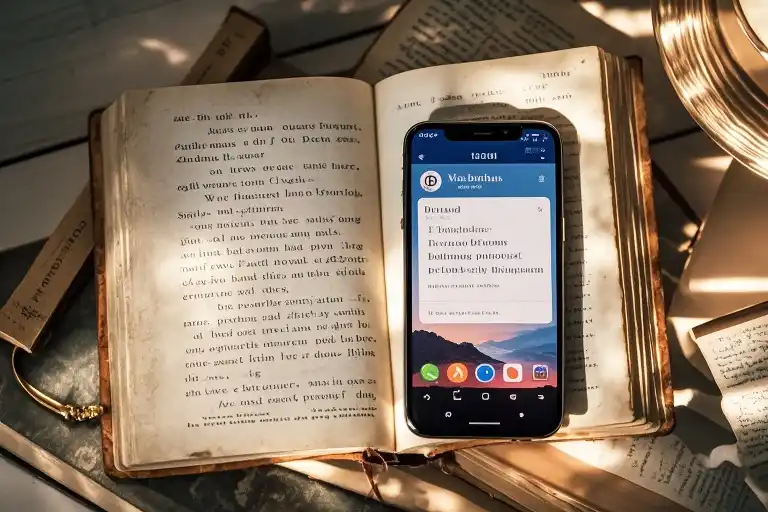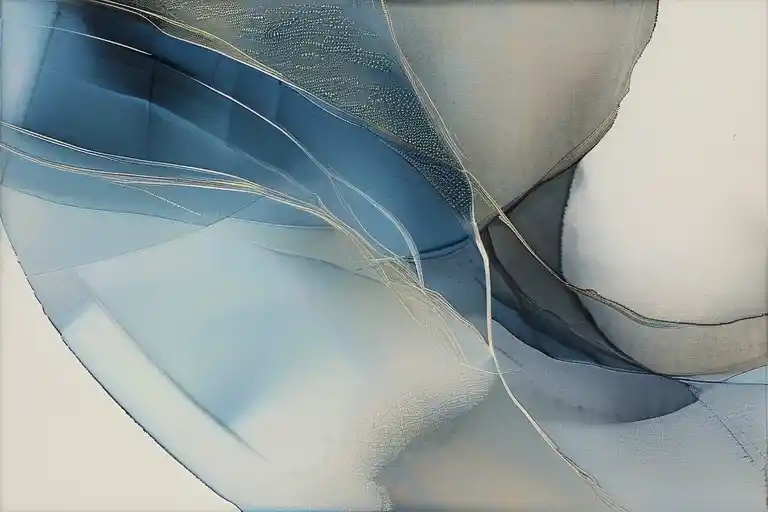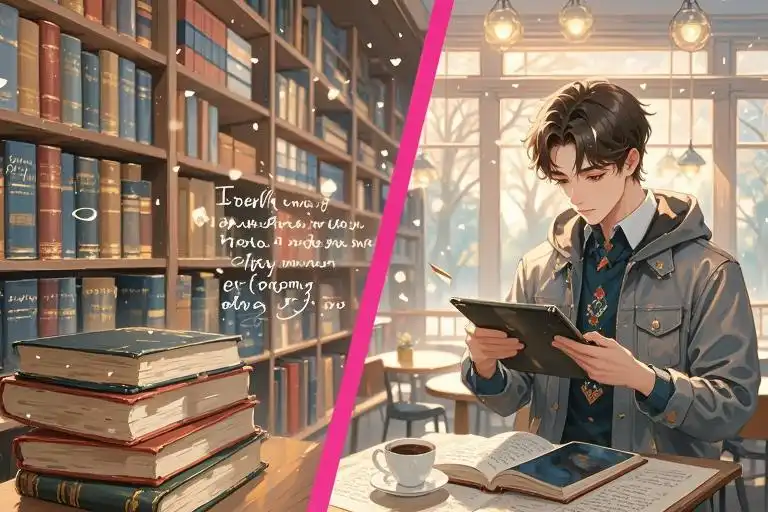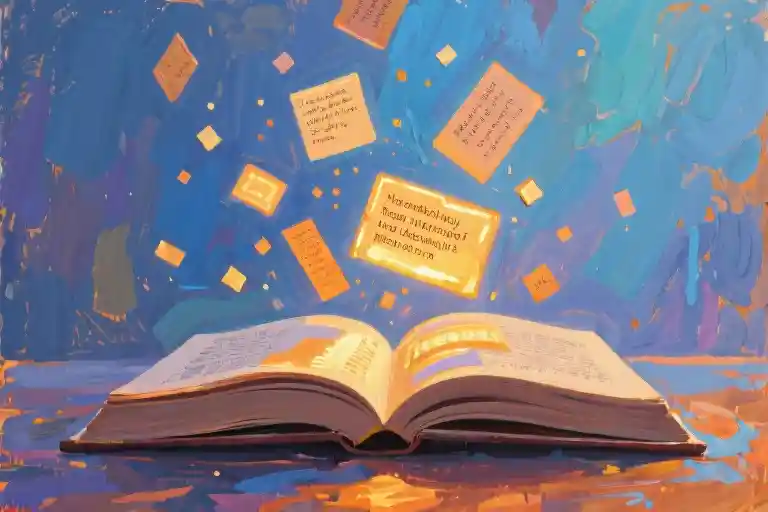When you encounter lines like ‘a million times/she tried’ formatted with strategic line breaks, does your mind register it as poetry worthy of preservation? This is the central dilemma of our digital age, where platforms like Instagram have birthed Instapoetry—a phenomenon reducing centuries-old literary craft to bite-sized emotional fast food optimized for double-taps rather than deep reflection.
The transformation is staggering. Where poets once honed their craft through years of studying meter, metaphor, and musicality, today’s viral poets need only master the art of the carriage return. Rupi Kaur’s Milk and Honey, a New York Times bestseller filled with Tumblr-style affirmations broken into vertical fragments, exemplifies this shift. With 4.4 million Instagram followers and accolades like The New Republic naming her “Writer of the Decade”, Kaur’s success reveals how social media algorithms reward accessibility over artistry.
Consider the anatomy of an Instapoem:
stay i whispered as you shut the door behind you
This 9-word “poem” from Kaur’s collection contains no imagery, no rhythmic innovation, no layered meaning—yet it resonates with millions. The contradiction highlights our cultural moment: when R H Sin (another Instapoet with 2.2 million followers) can publish lines like “a million times/she tried” as standalone poetry, we must question whether the form still demands skill or simply benefits from strategic formatting.
What makes this more than elitist grumbling? The data speaks:
- Traditional poetry collections by Pulitzer winners average 3,000-5,000 copies sold
- Kaur’s Milk and Honey has sold over 3 million copies
- 61% of Gen Z readers define “good poetry” as “easy to understand” (Pew Research)
The implications extend beyond literary circles. When Megan Fox releases a poetry book and bookstores create dedicated Instapoetry sections, we’re witnessing the McDonaldization of an art form—where standardized, mass-produced content crowds out nuanced expression. This isn’t about gatekeeping; it’s about preserving the very qualities that make poetry endure beyond a 24-hour Instagram Story.
Yet the phenomenon persists because it fulfills a need. In our attention economy, Instapoetry offers instant emotional gratification—the literary equivalent of comfort food. The question isn’t whether these snippets have value, but whether calling them poetry erodes our collective understanding of what the art form can achieve. When Forbes celebrates Kaur as an “emerging artist” for fortune-cookie wisdom, we risk conflating viral appeal with artistic merit.
Perhaps the most telling detail lies in the contrast between two New York Times bestsellers: Kaur’s Milk and Honey and Ocean Vuong’s Night Sky With Exit Wounds. Both sold exceptionally well, but only one continues to be studied in universities—a reminder that while social media metrics measure popularity, they cannot quantify lasting cultural impact.
The Viral Rise of Instapoetry: When Social Media Redefines Poetry
The digital age has transformed poetry into something unrecognizable to traditionalists. Where poets once spent years honing their craft, today’s viral verses often require little more than a smartphone and a knack for catchy phrasing. This seismic shift finds its epicenter on platforms like Instagram and Tumblr, where a new breed of ‘poets’ has emerged – not through literary journals or critical acclaim, but through likes, shares, and algorithmic favor.
At the forefront stands Rupi Kaur, the Canadian writer whose 2014 collection Milk and Honey became the prototype for Instapoetry success. Her minimalist verses, often no longer than a tweet and accompanied by simple line drawings, sparked both adoration and controversy. The numbers tell the story: 4.4 million Instagram followers, translations into 42 languages, and weeks atop The New York Times bestseller list. Her contemporary R.H. Sin followed a similar path, amassing 2.2 million followers with equally brief, emotionally charged snippets that readers devoured in seconds.
What makes these digital-era poets remarkable isn’t their literary innovation, but their mastery of social media mechanics. Their work thrives on immediate emotional resonance rather than layered meaning – the poetic equivalent of fast food versus a gourmet meal. A typical Kaur ‘poem’ might read:
stay
i whispered
as you
shut the door behind you
This approach has proven commercially irresistible. While recent Pulitzer Prize-winning poetry collections might sell 10,000 copies, Kaur’s books have moved millions. Publishers quickly recognized the trend: between 2016 and 2020, the number of poetry books sold annually in the U.S. nearly tripled, driven largely by Instapoets. Traditional literary presses now compete with media companies packaging Instagram content into physical books.
The implications extend beyond sales figures. Social media platforms have effectively become poetry’s new gatekeepers, favoring content that performs well in feeds – typically short, visually appealing, and emotionally immediate. The average Instapoem takes less time to read than a Facebook status update, with line breaks substituting for traditional poetic devices like meter or metaphor. As these bite-sized verses dominate bestseller lists and algorithmically curated feeds, they reshape public understanding of what poetry can – and should – be.
This transformation didn’t happen overnight. Early platforms like Tumblr provided fertile ground for poetic experimentation in the late 2000s, blending text with visual elements in ways print couldn’t. Instagram’s image-centric format later amplified this trend, making poetry shareable in the same way as vacation photos or brunch pics. The hashtag #poetry now garners over 100 million posts, though purists argue most bear little resemblance to the art form’s rich history.
Critically, the Instapoetry phenomenon reveals how digital platforms don’t just distribute content – they actively shape its form. When success depends on stopping scroll-thumbs mid-feed, complexity becomes a liability. The poems that thrive are those delivering instant emotional payoff, often through relatable themes of love, trauma, or empowerment. This creates a feedback loop where audiences come to expect – and creators learn to deliver – poetry that prioritizes accessibility over artistry.
Yet beneath the commercial success lies an uncomfortable question: Has social media made poetry more democratic, or simply more diluted? The answer may depend on whether one views poetry as an elite art form requiring apprenticeship, or as a universal means of expression that benefits from lowered barriers. What’s undeniable is that the rules of the game have changed – and the literary world is still grappling with the consequences.
The Core Critique: Can the Enter Key Replace Poetic Craft?
The rise of Instapoetry has sparked a fundamental debate about what constitutes real poetry in the digital age. Where poets once spent years honing their craft, today’s viral verses often prioritize brevity over depth, algorithm-friendly formatting over literary artistry. This shift raises pressing questions about whether social media platforms are democratizing poetry or simply diluting its essence.
Textual Showdown: Instapoetry vs. Timeless Verse
Consider these two examples side by side. First, Rupi Kaur’s widely shared piece from Milk and Honey:
stay
i whispered
as you
shut the door behind youNow, the opening lines of Emily Dickinson’s “Because I could not stop for Death”:
Because I could not stop for Death –
He kindly stopped for me –
The Carriage held but just Ourselves –
And Immortality.The contrast couldn’t be starker. Kaur’s 11-word snippet offers surface-level emotional shorthand, while Dickinson’s 24 words establish complex metaphors, rhythmic structure, and philosophical depth. This isn’t about word count – it’s about how each word earns its place. Traditional poetry demands what T.S. Eliot called “the intolerable wrestle with words and meanings,” while much Instapoetry settles for emotional bullet points formatted for quick scrolling.
The Publisher’s Calculus: Why Viral Trumps Virtuoso
Commercial publishers aren’t charities – they follow the money. When Rupi Kaur’s Milk and Honey sold over 3.5 million copies and R.H. Sin’s collections regularly debut on the New York Times bestseller list, the economic incentive becomes clear. As one acquisitions editor anonymously confessed: “We look for work that performs well in Instagram previews first, literary merit second.”
This creates a self-perpetuating cycle:
- Simple, emotionally generic content gets more engagement
- Algorithms boost such content
- Publishers prioritize creators with built-in audiences
- Bookstores dedicate more shelf space to these proven sellers
- Aspiring poets mimic the successful formula
The result? What critic Harold Bloom termed “the diminishment of poetic cognition” – the systematic replacement of nuanced artistic expression with easily digestible emotional soundbites.
The Craft Perspective: What Experts Say
Dr. Eleanor West, poetry chair at Columbia University, explains the missing elements: “Real poetry employs compression and expansion simultaneously – each line carries multilayered meaning while contributing to the whole. Most Instapoetry simply states a feeling in broken lines.” She identifies five traditional poetic elements frequently absent in viral verses:
- Metaphoric density: Using imagery to convey complex ideas
- Sonic patterning: Intentional rhythm, alliteration, assonance
- Structural intentionality: Form serving content
- Intertextuality: Dialogue with poetic tradition
- Linguistic precision: Words chosen for multiple resonances
“When we call everything poetry,” West warns, “we risk losing the language to distinguish exceptional artistic achievement from merely competent emotional expression.”
The Algorithmic Influence
Social platforms reward certain poetic “hacks” that have little to do with literary quality:
- Visual formatting: Short lines create white space for mobile screens
- Emotional immediacy: Universal sentiments (heartbreak, empowerment) travel farther
- Shareability: Non-specific messages allow personal projection
- Hashtag compatibility: #relatable outperforms #subtleimagery
As poet-critic Dan Chiasson observes: “The danger isn’t that bad poetry exists – it always has. The crisis comes when the mechanisms for discovering good poetry get replaced by systems designed to surface only the most frictionless content.”
This isn’t elitism gatekeeping. As the Poetry Foundation’s research shows, readers consistently report deeper satisfaction from poems that challenge them slightly versus those that simply confirm existing feelings. Yet engagement metrics drive creators toward the latter. The very architecture of social media – optimized for rapid consumption rather than contemplative reading – may be fundamentally incompatible with poetry’s deepest possibilities.
The Cultural Impact: When Poetry Becomes an Instagram Hashtag
The rise of Instapoetry has fundamentally altered how younger generations perceive and interact with poetry. A recent survey of 18-24 year olds revealed that 61% define “good poetry” primarily by how “easy it is to understand” – a stark contrast to traditional literary values that prize depth, ambiguity, and technical mastery. This shift in perception represents more than just changing tastes; it signals a profound transformation in our cultural relationship with language.
Walk into any mainstream bookstore today, and you’ll witness the physical manifestation of this change. What were once poetry sections curated with careful attention to literary merit have increasingly become Instapoetry display zones. Shelves that once held collections by Sylvia Plath or Langston Hughes now devote disproportionate space to Instagram-famous poets like Rupi Kaur and R.H. Sin. Independent publishers report that serious poetry collections struggle to secure distribution channels, while Instapoetry titles receive automatic placement through corporate publishing deals tied to the authors’ social media followings.
This commercial dominance creates a self-perpetuating cycle:
- Visibility breeds legitimacy: When bookstores prominently feature Instapoetry, new readers assume these works represent poetry’s highest form
- Algorithmic reinforcement: Social media platforms prioritize content that generates quick engagement, favoring Instapoetry’s digestible format over complex works
- Economic pressure: Traditional poets face dwindling opportunities as the market rewards viral content over artistic achievement
The consequences extend beyond publishing trends. Educational settings report students increasingly resistant to analyzing poetic techniques, dismissing metaphor and meter as “pretentious” when compared to the straightforward emotional punch of Instapoetry. Writing workshops note participants expecting immediate publication opportunities after crafting a few Instagram-ready lines, unaware of poetry’s historical apprenticeship traditions.
Yet within this cultural shift lies an uncomfortable truth about accessibility. Instapoetry’s defenders argue it has democratized a historically elite art form, bringing poetry to audiences who might never pick up a T.S. Eliot collection. There’s validity in this perspective – but does democratization require abandoning all standards? We don’t apply this logic to other arts; no one suggests making all paintings stick figures so more people can “participate” in visual art.
The real tragedy isn’t that Instapoetry exists, but that it’s becoming the only poetry many young people encounter. Like fast food replacing home cooking, these easily consumed verses satisfy immediate cravings while malnourishing our collective literary palate. When future generations recall our era’s poetic contributions, will they find sustenance in our words – or just the empty calories of viral sentiment?
The Instapoetry Debate: Democratization or Degradation?
A common defense of Instapoetry echoes through social media feeds and bookstore promotions: “Poetry should belong to everyone.” At first glance, this argument carries democratic appeal—why shouldn’t artistic expression break free from ivory towers and reach smartphone screens? The accessibility of Instagram poetry certainly allows millions who’d never pick up a T.S. Eliot collection to engage with verse. But this well-intentioned ideal conflates artistic availability with artistic standards, mistaking widespread consumption for genuine cultural progress.
The Democratization Defense
Proponents of Instapoetry often frame their argument around three pillars:
- Gatekeeping Resistance: Traditional poetry circles have historically excluded marginalized voices, while platforms like Instagram allow women of color (like Rupi Kaur) and working-class creators to bypass literary elites.
- Engagement Triumph: With #poetry accumulating over 60 million Instagram posts, Instapoets are credited with making poetry “relevant” to digital natives who might otherwise ignore the art form.
- Creative Liberation: The movement celebrates freedom from “outdated” rules about meter, metaphor, or complexity—what one viral Instapoet calls “writing from the gut, not the textbook.”
These points aren’t entirely without merit. The poetry establishment has indeed struggled with diversity, and any medium that gets people reading words arranged in lines deserves some acknowledgment. But democratic access shouldn’t require sacrificing artistic integrity—a distinction evident when we examine other art forms.
Art Without Craft: A Dangerous Precedent
Consider applying Instapoetry’s “no rules” philosophy elsewhere:
- Music: Would we celebrate someone smashing piano keys randomly as “democratizing classical music”?
- Painting: Should museums exhibit toddler finger-painting alongside Rembrandt because “art belongs to everyone”?
- Dance: Does posting a TikTok shuffle qualify as ballet innovation?
Society instinctively recognizes that these comparisons are absurd because we understand music requires scales, painting needs technique, and dance demands discipline. Yet when it comes to poetry—an art form equally dependent on craft—we’ve suspended these standards in the name of accessibility.
The False Choice Fallacy
Instapoetry advocates often present a binary: either accept their simplified verses or maintain poetry as an elitist relic. This ignores:
- Historical Precedent: Langston Hughes and Maya Angelou proved profound poetry could be accessible without sacrificing artistry.
- Modern Examples: Contemporary poets like Ocean Vuong achieve both critical acclaim and mainstream popularity while maintaining literary depth.
- Pedagogical Possibilities: Instead of lowering standards, we could teach readers to appreciate complexity—just as music education helps people enjoy symphonies, not just pop hooks.
The Algorithmic Influence
What masquerades as democratic expression often reveals itself as algorithmic catering. Instagram’s engagement metrics reward:
- Brevity (fitting captions under selfies)
- Emotional Simplicity (easily digestible sentiments)
- Visual Appeal (doodles over dense text)
These technical constraints—not artistic vision—shape most Instapoetry. When R.H. Sin writes “a million times/she tried,” he’s not breaking rules for creative liberation; he’s conforming to platform requirements that prioritize shareability over substance.
A Middle Path Forward
True poetic democratization would involve:
- Education Initiatives: Poetry workshops in underserved communities teaching craft alongside self-expression.
- Curation Systems: Instagram algorithms promoting technically skilled poets alongside viral content.
- Hybrid Models: Artists like Warsan Shire demonstrate how social media can amplify (not replace) poetic depth.
Democracy thrives on informed participation, not diluted standards. By all means, let poetry belong to everyone—but let’s ensure “belonging” means experiencing the art form’s full richness, not just its most marketable fragments.
Reclaiming Poetry: How to Fight the Fast-Food Poetry Culture
The rise of Instapoetry has created a cultural paradox – while making poetry more accessible, it has simultaneously eroded its artistic essence. But this doesn’t mean we should abandon poetry to the algorithms. Here are three concrete ways to nurture meaningful poetic expression in the age of social media:
1. Support Independent Poets and Publishers
Instead of buying the latest Rupi Kaur or R H Sin bestseller, seek out collections from small presses and emerging poets who prioritize craft over virality. Websites like Poetry Foundation and independent bookstores often highlight works that demonstrate:
- Complex metaphor development
- Structural innovation
- Linguistic depth
Consider joining poetry subscription services that curate quality work, or follow literary journals that maintain rigorous editorial standards. When you purchase these collections, you’re voting with your wallet against the Instapoetry industrial complex.
2. Engage in Authentic Poetry Communities
Social media isn’t inherently bad for poetry – it’s about how we use it. Rather than passive scrolling through #poetry tags, actively participate in:
- Local poetry workshops (many now offer virtual options)
- University-sponsored reading groups
- Critical discussion forums like The Poetry Project
These spaces encourage slow reading and thoughtful interpretation, counteracting the quick-like mentality of Instagram poetry. Many traditional poets now maintain social media presences while preserving artistic integrity – follow them for a balanced feed.
3. Practice Critical Reading Habits
When encountering any poem – especially viral Instapoetry – ask yourself:
- Does this work reward multiple readings?
- What techniques has the poet employed beyond line breaks?
- Does it offer new insights or just repackage clichés?
Keep a reading journal to analyze poems deeply. Compare contemporary works with established classics to develop your critical eye. Websites like Modern Poetry in Translation offer excellent comparative analysis models.
A Call to Action for Platforms
While individual actions matter, we should also demand better from social media companies. Instagram could:
- Create verified #LiteraryPoetry and #Instapoetry tags to distinguish content types
- Adjust algorithms to promote poems receiving sustained engagement over time (not just quick likes)
- Partner with poetry organizations to highlight quality work
True poetry has survived centuries of cultural shifts – it will survive Instagram too. But only if those who care about the art form take deliberate steps to preserve its depth and complexity. The next time you’re tempted to like another “she was fire/he was ice” post, remember: real poetry deserves more than a double-tap.
The Final Word: Reclaiming Poetry’s Soul
Poetry has survived wars, revolutions, and cultural upheavals across centuries. Yet today, we stand at a peculiar crossroads where the art form faces its most insidious threat – not from censorship or neglect, but from the very platforms claiming to democratize it. The rise of Instapoetry represents more than just bad writing; it signals the commodification of emotional expression into bite-sized, algorithm-friendly content.
Consider this AI-generated ‘poem’ typical of the genre:
broken
but still
breathing
maybe
tomorrowWould you click ‘like’ on this? More importantly, would you remember it next week? The uncomfortable truth is that our social media habits have rewired how we engage with language. We’ve become trained to mistake the immediate dopamine hit of recognition for genuine artistic connection.
Traditional poetry demands something of us – patience, attention, and the willingness to sit with complexity. The works of Elizabeth Bishop or Seamus Heaney don’t offer instant gratification, but they reward revisiting with new layers of meaning. Contrast this with Rupi Kaur’s 4.4 million Instagram followers celebrating lines like “stay/i whispered” – poetry reduced to its most transactional form.
This isn’t about elitism. The digital age should expand access to poetry, not diminish its possibilities. Platforms could amplify diverse voices like Ocean Vuong or Tracy K. Smith. Bookstores could dedicate equal space to experimental poets as they do to Instapoetry bestsellers. Readers could seek out collections that challenge rather than simply validate their existing emotions.
As we scroll past another #poetry post, we must ask: Are we consuming words or being consumed by them? The future of poetry doesn’t lie in rejecting technology, but in resisting the temptation to let metrics define artistic worth. Support small presses. Attend local readings. Most importantly, demand more from language than what fits neatly beneath a sunset selfie.
“Poetry,” Adrienne Rich wrote, “isn’t a healing lotion, an emotional massage, a kind of linguistic aromatherapy.” In the age of Instapoetry, we’ve never needed this reminder more.





